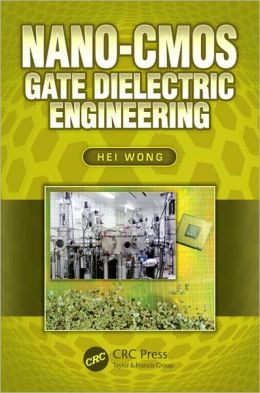 [内容简介]
[内容简介]
According to Moore’s Law, not only does the number of transistors in an integrated circuit double every two years, but transistor size also decreases at a predictable rate. At the rate we are going, the downsizing of CMOS transistors will reach the deca-nanometer scale by 2020. Accordingly, the gate dielectric thickness will be shrunk to less than half-nanometer oxide equivalent thickness (EOT) to maintain proper operation of the transistors, leaving high-k materials as the only viable solution for such small-scale EOT.This comprehensive, up-to-date text covering the physics, materials, devices, and fabrication processes for high-k gate dielectric materials, Nano-CMOS Gate Dielectric Engineering systematically describes how the fundamental electronic structures and other material properties of the transition metals and rare earth metals affect the electrical properties of the dielectric films, the dielectric/silicon and the dielectric/metal gate interfaces, and the resulting device properties. Specific topics include the problems and solutions encountered with high-k material thermal stability, defect density, and poor initial interface with silicon substrate. The text also addresses the essence of thin film deposition, etching, and process integration of high-k materials in an actual CMOS process.
Fascinating in both content and approach, Nano-CMOS Gate Dielectric Engineering explains all of the necessary physics in a highly readable manner and supplements this with numerous intuitive illustrations and tables. Covering almost every aspect of high-k gate dielectric engineering for nano-CMOS technology, this is a perfect reference book for graduate students needing a better understanding of developing technology as well as researchers and engineers needing to get ahead in microelectronic engineering and materials science.
[目次]
Overview of CMOS Technology
Introduction MOS Transistor: A Quick Introduction to Classical Models Short-Channel Effects and Short-Channel Modifications Features and Uniqueness of MOS Transistor MOS in Deca-Nanometer Technology Trends and Options Summary References
High-k Dielectrics
The High-k Candidates Electronic Structure of Transition Metals and Rare Earth Metals Material Properties of Elemental Transition Metal and Rare Metal Oxides Bandgap and Band Offset Energies Bond Ionicity and Dielectric Constant Carrier Effective Masses Thermal Stability Disorders and Defects Summary References
Complex Forms of High-k Oxides
Introduction Silicates and Aluminates Pseudo-Binary Alloys Stoichiometric Binary Alloys Doping Thermal Stability and Phase Separation Summary References
Dielectric Interfaces
Introduction High-k/Silicon Interface High-k/Metal Interface Summary References
Impacts on Device Operation
Introduction Gate Leakage Current Threshold Voltage Control and Fermi-Level Pinning Channel Mobility Subthreshold Characteristics Dielectric Breakdown Hot-Carrier Effects Temperature Instabilities Summary References
Fabrication Issues
Process Integration Atomic Layer Deposition Metal Organic Chemical Vapor Deposition Physical Vapor Deposition Etching Summary References
Conclusions Appendix A: Fundamental Physical Constants and Unit Conversions Appendix B: Properties of Si and SiO2
Index

 新书报道
新书报道